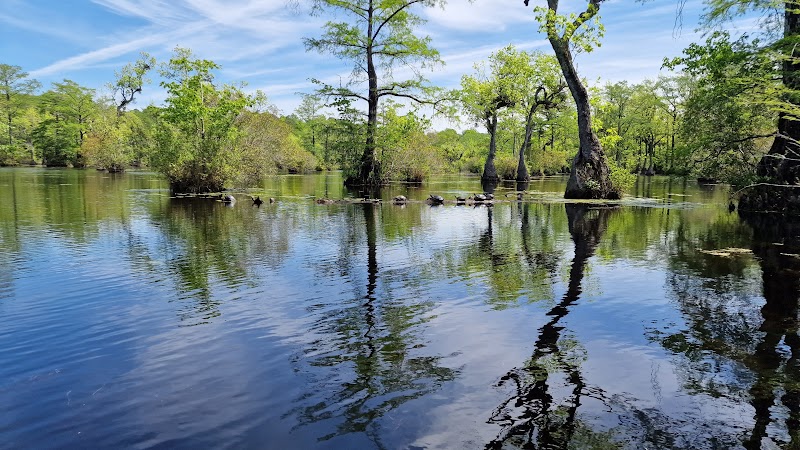
Annual Birding Walks at Wakefield State Forest: A Practical Guide to Virginia’s Avian Adventure
The Annual Birding Walks at Wakefield State Forest combine accessible hiking with vibrant birdwatching opportunities across spring and fall migration seasons. Ideal for both new and experienced explorers, these guided walks provide an immersive way to connect with Virginia’s woodland birdlife while navigating moderate trails.
Bring Binoculars for Better Viewing
Binoculars greatly enhance the birdwatching experience by allowing you to observe distant or well-hidden birds without disturbing them.
Wear Waterproof Footwear
Morning dew and spring rains can turn trails slippery; waterproof hiking shoes or boots will keep you comfortable and safe.
Hydration is Key
Carrying at least a liter of water helps you stay energized, especially during warmer months or longer walks.
Start Early for the Best Wildlife Activity
Birds are most active in the early morning hours, making dawn the best time for sightings and clearer soundscapes.
Annual Birding Walks at Wakefield State Forest: A Practical Guide to Virginia’s Avian Adventure
Wakefield State Forest in Wakefield, Virginia, invites birders and hikers alike to the Annual Birding Walks, an experience where nature’s rhythm sets the pace. The forest trails span approximately 3.5 miles with gentle elevation gains under 400 feet, moving through mixed hardwoods and pine stands that shape a varied terrain. These paths are firm, well-maintained dirt and leaf-litter trails, perfect for steady footing but expect natural roots and occasional muddy sections after rain.
As the walks unfold, the trees perform their part — oaks and maples rustle with small flocks of chickadees and warblers, while the distant calls of barred owls challenge your attention. The forest doesn’t rush; it invites careful observation. Early mornings offer the clearest soundscape, when the songbirds dare you to discern their melodies.
Preparation is key for this accessible yet sensory-rich hike. Wear sturdy, breathable footwear, preferably waterproof by spring showers and fall dampness. Bring a lightweight pack with water — 1 to 1.5 liters per person depending on the temperature — and a pair of binoculars to pick out distant perches.
Timing your visit during the organiser’s scheduled walks enhances the experience; expert guides point out rare species and share insights about local habitats. The walks occur mostly in spring and fall, framing migration windows packed with action. The heat and humidity of summer mute some birdlife, while winter’s chill calls for warmer attire and less predictable sightings.
Wakefield State Forest's birding walks emphasize respect for the environment. Trails encourage staying on marked paths to protect undergrowth that shelters nesting birds. The forest, fiercely itself, plays host to the indigo bunting—flashing brilliant blue against earth tones—and the ever-curious wood thrush, whose ethereal song fills shaded hollows.
For hikers, the trail’s moderate distance and gentle climbs mean this is an adventure that rewards attentiveness more than sheer endurance. Expect to spend about two hours moving at a pace that allows frequent stops to observe, listen, and appreciate.
In every sense, the birding walks tap into an exchange—between walker and wilderness, observer and subject—built on patience and a willingness to notice the subtle energy of the forest’s winged residents. Whether you're ticking species off a checklist or simply soaking in the quiet vitality, Wakefield State Forest offers a practical outdoor engagement, anchored in discovery and grounded by manageable terrain.
Nearby Trips
All Adventures
Boat Charters
Water Activities
Adventures near Wakefield, Virginia
Discover the unique and memorable adventures that make Wakefield, Virginia special.
Frequently Asked Questions
Are the Annual Birding Walks suitable for kids or beginners?
Yes, the trails at Wakefield State Forest are moderate and well-maintained, making them suitable for beginners and families with children. The guided nature of the walks helps newcomers learn bird identification and trail etiquette.
Do I need a permit or to register for the birding walks?
Registration is typically required and managed by the Virginia Department of Forestry or local birding groups. Check their website before your visit for current schedules and any fees.
What types of birds can I expect to see?
Expect common eastern woodland species like wood thrush, indigo bunting, various warblers, and migratory songbirds during spring and fall. Hawk sightings are also possible during migration.
Are there any most scenic or quiet spots along the trails?
Yes, a clearing near the forest’s northern edge offers sweeping views perfect for spotting soaring raptors. The shaded wetlands area is quieter and highlights waterfowl and shorebird activity.
Is it necessary to bring insect repellent?
During late spring and summer, insect repellent is recommended to guard against mosquitoes and ticks common in wooded areas.
Can I hike the trails outside of the guided birding walks?
Yes, the forests and trails are open year-round, but guided walks provide enhanced learning and better birdwatching opportunities.
Recommended Gear
Binoculars
Essential for spotting and identifying distant birds along the trail.
Waterproof Hiking Shoes
Protects feet from wet or muddy trail conditions common in springtime.
Water Bottle (1-1.5 liters)
Maintains hydration during warmer months or longer walks.
Light Jacket or Windbreaker
Provides warmth and protection against wind or sudden temperature drops.
Local Insights
Hidden Gems
- "The small pond near the western trailhead attracts kingfishers and painted turtles."
- "An overlook on the southern trail reveals a rarely visited vista of the forest’s patchwork canopy."
Wildlife
- "Look for pileated woodpeckers working dead trees and eastern box turtles crossing the trails."
- "Observe the elusive barred owl’s call during dusk or dawn hours."
History
"Wakefield State Forest was established in the mid-20th century to conserve longleaf pine habitats once widespread in Virginia’s coastal plain. It represents one of the last large state forests in the region, emphasizing sustainable forestry alongside wildlife preservation."
